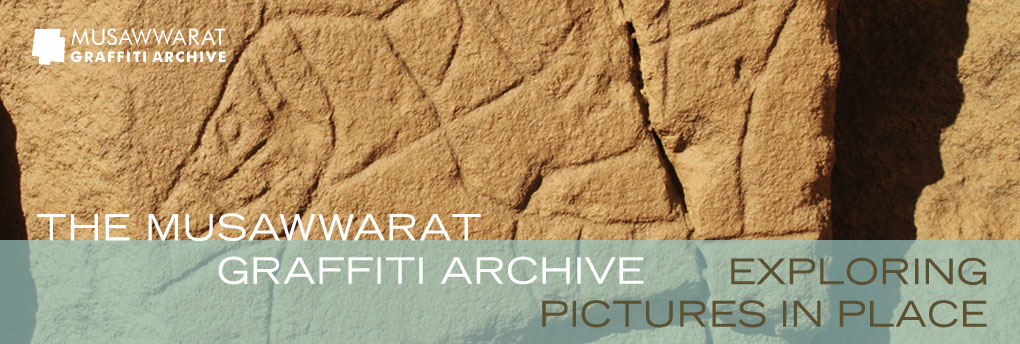The Musawwarat Graffiti
Thousands of graffiti, 'informal' pictorial and inscriptional incisions as well as markings, adorn the extensive sandstone walls of the Great Enclosure of Musawwarat. Many of these stem from the Meroitc period but also from the younger post-Meroitic, Christian and Islamic periods. The graffiti, which name and depict gods, humans, animals - sometimes arranged in scenes, and which show symbols, objects and others, may hold a key to the interpretation of the diachronic use of this site. They allow, for example, a rare view into the interplay between (official) state and (inofficial) folk religion and practices.
The Musawwarat graffiti form a rare corpus of data on networks of contact between people and places in the ancient world. The diachronically different preferences in motifs additionally illustrate culture change. This is apparent, for example, in the appearance of the camel and the associated changes in the socio-economic, political and symbolic realms. In any case, the graffiti are thought to have been left behind by the numerous visitors to Musawwarat and to reflect the superregional importance attached to this site over time.
The graffiti have not hitherto undergone a detailed discussion and publication, however, although they have been partially documented by successive researchers since the late 1960s. This situation is the more regrettable as recent investigations at the site have shown that the graffiti are threatened by rapid deterioration as well as by the rising number of visitors to the site, some of whom deface the ancient graffiti by adding their own signatures. Taking note of the lack of research on this valuable source of information on the ancient past and the perception of ancient monuments over time, the Musawwarat Graffiti Project has been dedicated to the documentation, study and (virtual) preservation of the intrictate graffiti corpus of the Great Enclosure since 2007.
Text: Cornelia Kleinitz (2011, last update: 14/04/2014)







